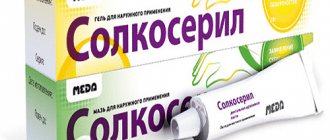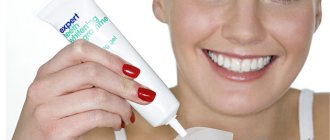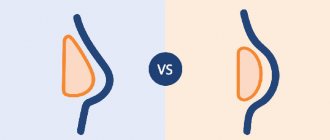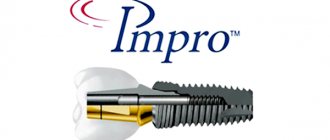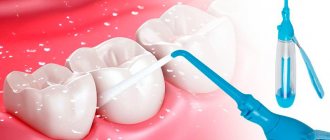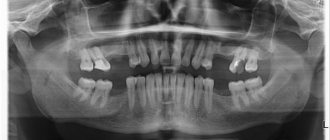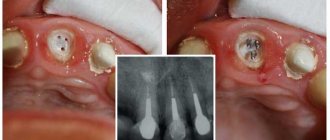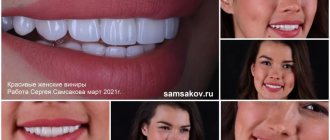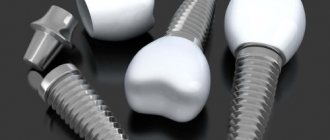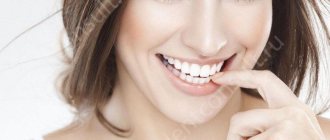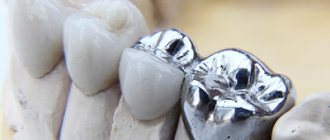A small chin (medically called inferior micrognathia, or microgenia) is an incredibly common problem.
However, most people who can be confidently diagnosed with this have not only not heard such words, but also do not suspect that there is anything wrong with them. They are healthy, everything is in place. But no matter how hard they try to achieve an ideal appearance, it doesn’t work!
Neither losing weight, nor taking care of your face, nor changing your hairstyle helps. It's not clear what's going on! As a result, people either come to terms with the fact that everyone is imperfect, or they suffer all their lives because the ideal is unattainable for them personally.
Diagnostics
A small chin can also be diagnosed visually. A small chin is determined by appropriate measurements: the height of an ideal chin is equal to half the height of the lower third of the face. The jawline is clearly and smoothly defined. Another way to diagnose a small chin: you need to look from the side at a person’s tilted head and conditionally draw two lines - a horizontal one that passes through the ear canal and the lower edge of the orbit, and a vertical one that passes through the deepest point at the root of the nose. If the chin does not protrude beyond the vertical line, the chin is underdeveloped (microgenia). To diagnose a small chin, specialists also evaluate the client’s bite.
Why does a small chin form?
In the vast majority of cases, such a defect in appearance is due to human genetics. That is, it is a hereditary factor, a feature of the anatomical structure of a given area of the face. Sometimes the chin may only appear small in comparison with the surrounding areas. For example, the folds of fat on the neck can be so large that they cover the bone structures of the lower jaw, and even a normal-sized chin simply “sinks” into them. Less commonly, such a defect in appearance can also be the result of injury or surgery on the bones of the lower third of the face.
Adjustment methods
Thanks to the treatment of such a defect, it becomes possible to increase the configuration of the lower jaw, make the face more youthful, improve the aesthetics and attractiveness of the face, and make it more proportional and symmetrical. For this purpose, a plastic surgeon performs chin plastic surgery (mentoplasty). It can be performed by both men and women.
It is often recommended to enlarge the chin during a circular facelift or a neck lift.
- Increasing the size of a small chin can be done using the bone grafting method - enlarging and building up the own bone of the lower jaw, or exposing the chin by installing tiny plates.
This method is much safer than the method of installing silicone implants in soft tissue, since the possibility of implant migration is reduced. The tiny four-centimeter incision in the mouth (in the fold between the lining of the lower teeth and the lower lip) is not visible and heals quickly.
- You can also increase the size of a small chin through endoprosthetics (using implants). The plastic surgeon and the patient choose the best implant for the shape and size.
Endoprosthetics of the cheekbones and chin is carried out through the use of safe facial implants. The implant is inserted by a plastic surgeon through three to four centimeter long incisions in a fold of the oral mucosa or in a skin fold under the lower jaw. Through this incision, the specialist peels off the periosteum in the chin area and along the edge of the lower jaw according to the size of the implant. The implant is inserted into the subperiosteal tunnels with its side parts and fits well to the bone. No displacement occurs. Upon completion of chin replacement, the client is given an elastic bandage.
- Another way to increase the size of a small chin is a non-surgical procedure for lipofilling (adjusting the size of the chin using cells from the client’s own adipose tissue).
Chin surgery is performed under general anesthesia. Surgery to increase the size of a small chin can also be combined with rhinoplasty, forehead and face lift.
How to fix a small chin in men and women?
Conservative methods will be ineffective in most cases. After all, the main reason for this cosmetic defect is the peculiarities of the anatomical structure of the bones. And no ointments, massage, masks, gymnastic exercises, etc. can change it. It will also not be possible to hide such a deficiency by physically training the muscles and increasing their volume, since the muscle layer here is extremely small. Of course, if the reduction of the chin is purely visual, caused by fat deposits on the neck, losing weight will help, but in other cases, the most effective tactic will be surgical correction.
What are implants made of?
In addition to silicone implants, there are also bioprostheses (based on the patient’s cartilage tissue). Despite the fact that they are as safe as silicone, and therefore are also often used to enlarge the chin, experts note some nuances that can sometimes arise when using them.
“Of course, silicone implants are ideal for chin augmentation, because they do not affect the resorption of bone tissue,” notes Elena Chirikova.
— Silicone elastomer is a semi-soft material, and when changing such an implant, we see the absence of any resorption in the area of the bony part of the chin. If the implant is made of a hard material (for example, a rib), then the bone part of the chin experiences severe pressure from the bioimplant, which forces it to follow the contour of its posterior (facing the bone) part, and the bone part of the chin is resorbed, that is, it loses its own volume.”
Treatment of skin diseases in children
Since childhood skin diseases occur under the influence of various factors, if a rash appears in a child, visit a dermatologist, he will prescribe tests to identify the causes of the pathology.
To combat dermatosis, drugs are used against the main causative agents of the disease, external agents and tablets are used, the action of which is aimed at eliminating unpleasant manifestations and strengthening the immune system. Physiotherapy - UHF, ultraviolet irradiation, laser therapy - is used as additional treatment methods.
Therapy is carried out at home; in case of chronic skin diseases, children are given vouchers to specialized sanatoriums.
How to treat skin diseases
| Name of the drug | Which group does it belong to? | What is it prescribed for? |
| Viferon, Panavir | Antiviral | For dermatoses of viral origin. |
| Acyclovir | Antiherpes remedy | For infections caused by various types of herpes virus. |
| Collomak, Feresol | Cauterizing agents | Helps remove warts. |
| Lamisil, Ketoconazole, Fluconazole, Nizoral shampoo, Dermazole | Antifungal drugs | For mycoses, seborrhea. |
| Tetracycline, Erythromycin | Antibiotics | For purulent lesions, secondary infections due to scratching of the rash. |
| Medifox, Benzyl benzoate, sulfur ointment | Acaricidal drugs | For scabies. |
| Pediculen Ultra, Nyx | Anti-pediculosis drugs | For pediculosis. |
| Trichopolum, Metronidazole | Antiprotozoal agents | With demodicosis |
| Zyrtec, Cetrin | Antihistamines | Prescribed for all types of dermatoses to eliminate itching and swelling. |
| Prednisolone, Diprospan, Hydrocortisone ointment, Lorinden | Glucocorticosteroids | Eliminates severe inflammatory processes and unbearable itching in severe forms of skin diseases. |
| Polysorb, activated carbon | Enterosorbents | They remove toxins and allergens from the body and are necessary for all types of skin diseases. |
| Ibuprofen, paracetamol | Antipyretic | Reduces temperature in infectious diseases. |
| Immunal, Polyoxidonium | Immunomodulators | They strengthen the immune system; medications are necessary for all types of dermatoses. |
| Bepanten | External emollients | For severe peeling of the skin. |
| Miramistin, Fukortsin | Antiseptics | For lubricating rashes due to dermatoses. |
| Tenoten, Pantogam | Sedatives | For nervous disorders. |
If the rash occurs against the background of diseases of the kidneys, liver, blood, or digestive system, it is necessary to eliminate the underlying disease.
Square chin
A person with such a chin has will, determination and strength of character. However, this type of chin is good for a man, but not for a woman. Usually a square chin occurs in people with not the highest intelligence.
The female version of this chin is softer and rounded. Women of this type are courageous and brave, but they are ready for self-sacrifice.
A person with a large, square and wide chin also has willpower; he will achieve his goal and will definitely win. In addition, he is power-hungry and loves to have sex.
Fleshy chin
What can your chin say about your character? You can't help but pay attention to this person. He is too smart, lucky, noticeable. Nature endowed him with an extraordinary mind and selfishness - a truly explosive mixture.
Having decided on their life goals, they, as a rule, do not deviate from what they planned. They are not shy when choosing the means to achieve what they want, they never question the correctness of the assigned tasks and do not think about their moral side.
The significance of a fleshy chin is enormous. Such a person loves himself too much to deny himself anything. On occasion, he can always find a person who can help him with projects. There will be many similar people in his life. Of course, he treats many of them harshly, but he will not make powerful and strong enemies for himself, he is too smart for that.
There is a high probability that a person with a fleshy chin will marry several times or decide to remain single after the first divorce. Selfishness will not allow you to create relationships full of mutual understanding.
Men of this type often become convinced bachelors who never deny themselves pleasure. And women are adventurers. Left alone, they do not lose heart at all, enjoying freedom and the ability to conquer men's hearts with their beauty and charm.
A child has tremors: when should you see a doctor?
It is necessary to consult a neurologist and conduct a comprehensive examination in the following cases:
- tremor did not go away until 4 months;
- trembling first appeared at the age of 2-4 months and does not disappear;
- the occurrence of tremor is not associated with stress, overexcitation, exposure to water and other factors;
- the child does not gain weight, there is no increase in height, his motor development does not meet age requirements;
- the size of the skull increases or decreases too quickly;
- the child experiences twitching of the head and neck, increased sweating, and bluish skin;
- in addition to tremor, symptoms of intracranial hypertension are observed;
- There is information that the baby was born prematurely and suffered hypoxia during childbirth or in utero.
Infant tremor, causes
The characteristics of a newborn's body are always reflected in their behavior. Even full-term babies are born with undeveloped systems and organs. This is fine. Hearing, vision, digestive, immune and endocrine systems must adapt to new conditions, and this takes time. Nerve centers are responsible for coordinating movements. Their immaturity at birth is the main cause of chin tremors.
There are often cases when the chin of a month-old baby shakes due to the consequences of an unfavorable pregnancy and problematic childbirth.
Another reason is related to the imperfection of the endocrine system. Any emotional experiences in the life of children under 1 year of age lead to the release of an excess amount of norepinephrine into the blood. This hormone increases tension, which causes twitching of different parts of the body. In addition to the chin, the lower lip, limbs, and head may tremble.
A variety of factors can trigger the appearance of tremors. Among them there are also dangerous ones associated with serious neurological disorders. The following abnormalities are often detected in children:
- Increased intracranial pressure.
- Metabolic disorders.
- Hyperglycemia.
- Sepsis.
- Hypoxic-ischemic encephalopathy.
- Intracranial hemorrhage.
Without the participation of specialists, it is very difficult to understand the causes of involuntary twitching of the chin. Not every young mother is able to correctly assess the condition of the baby, understand what is happening and how to behave correctly in such situations. If in doubt, go to the doctor, and the slightest suspicion of pathology should be the reason.
NEW LEVEL
Micrognathia, or jaw hypoplasia, is commonly referred to as an unusually short lower jaw. However, there is no standard or precise definition of this condition. The fact is that when comparing the proportions of the head of an adult and a newborn baby, we will see a very large difference in the ratio of the sizes of the lower jaw. In the last weeks of pregnancy, the fetus is in cramped conditions, its head is usually tilted, its chin is pressed to the chest. This position temporarily inhibits the growth of the chin, which is compensated by the relatively large size of the tongue compared to the tongue of an adult. But the most important thing is that the lower jaw of a newborn at birth is, as it were, at the start of the rapid changes that will occur to it in the next days and weeks with active motor load in the form of breast sucking. That is, the size of a newborn’s chin in most cases is not a fait accompli, but a point of development . With a high probability, a healthy child who receives breastfeeding on demand will sooner or later catch up or surpass his peers. Just like after a while all healthy babies begin to crawl and sit up, some a little earlier, others a little later.
We are talking about the characteristics of healthy children, but for children with genetic diseases, which are characterized by underdevelopment of the lower jaw, breastfeeding has no less therapeutic effect. That is, a breastfeeding consultant in this situation does not so much tell the mother how to adapt to the baby’s characteristics, but rather acts as a coach who helps level out these characteristics.
In clinical practice, the difference in jaw size is considered significant if the lower lip and lower jaw do not reach the upper gum. Sucking the breast on demand provides a good load on the facial muscles, and in breastfeeding children, the size of the jaw, as a rule, normalizes with age. For example, one study proved that in children 5-11 years old who were breastfed for up to 6 months, micrognathia was much less common than in their peers from the control group. (Lus, Garib, Auroca 2006)
Babies with a short jaw often have difficulty sucking at the breast. But not because of insufficient emphasis on the chin, as one might think, but because of the incorrect position of the tongue, which limits muscle movement and creates additional tension. In children with a short jaw, the tongue size is usually completely normal. In order for such a language to fit into a too limited space, the child is forced to resort to “tricks”. Most often, the baby acquires the habit of resting the tip of the tongue on the lower gum, while the root of the tongue is in constant tension, and a characteristic “bridge” appears.
Another option is to curl the tip of the tongue upward. In both cases, constant tension and unnatural position of the muscles lead to motor difficulties and form compensatory movements that complicate the sucking process. The most common is pushing out the nipple when latching on the breast . Instead of pulling the nipple deep into the mouth, the tongue makes the usual pushing movements. Such incoordination of tongue movements can be dealt with quite quickly using a silicone pad. Moreover, nursing mothers who are faced with this manner of latching on their babies usually complain of severe pain in the nipples and cracks. If the mother doesn’t like the idea of using a pad as a training device or the baby refuses to feed in it, finger feeding and tongue smoothing can have a similar effect.
An excellent effect is achieved by the so-called “thrown back” positions at the chest, which allow for a more asymmetrical grip.
If nipple pain continues despite training and special feeding techniques, you can encourage mom to replace several feedings a day with pumping to give her nipples a rest and healing. Time is the best assistant in such a situation. Most babies with a short lower jaw master the art of sucking at the breast by 12 weeks and stop causing pain to their mothers when feeding.
Photo source: https://newborns.stanford.edu/PhotoGallery/Micrognathia1.html and the author's own photo.
Tatyana Kondrashova, “New Level”.
Go to other articles for consultants of the “New Level” project
Contraindications for surgery
- Heart and pulmonary failure;
- Infections and inflammatory processes;
- Diabetes;
- Oncological diseases;
- Bleeding disorders;
- Exacerbation of chronic diseases
Elena KARPOVA, (@elena76016) Doctor of Medical Sciences, Associate Professor of the Department of Skin Diseases and Cosmetology, Russian National Research Medical University named after. N. I. Pirogova, plastic surgeon at the Danishchuk Clinic, member of the OPREH, member of the American Academy of Facial, Plastic and Reconstructive Surgery
Elena CHIRIKOVA, (@doctor_chirikova) plastic surgeon, Ph.D., member of OPREH, ISAPS
What is the difference
The main surgical methods that plastic surgery offers to change the chin are mentoplasty (genioplasty) and mandibuloplasty. “Mentoplasty is a surgical intervention directly on the chin area with the aim of reducing or enlarging it,” explains Elena Chirikova. — To reduce the chin, the bone structure of the chin is corrected; for enlargement, individual implants are installed.”
“Mentoplasty allows you to harmonize the face and strengthen the frame of its lower parts,” says Elena Karpova, “which prevents further ptosis of the soft tissues of the face (sagging).”
“Mandibuloplasty is the surgical correction of congenital and acquired defects of the lower jaw,” continues Elena Chirikova.
— This operation pursues not only aesthetic goals (elimination of asymmetry, improvement of the contour of the chin, etc.), but also solves problems of a functional nature (correction of pathological bite, normalization of articulation, chewing, etc.). Depending on the nature of the defect, mandibuloplasty may include osteotomy with lengthening of the jaw segment (for asymmetry), resection of the jaw with bringing together the mental protuberances (for a massive chin) or expanding the distance between the mental tuberosities (for hypotrophy of the chin), etc. Often, mandibuloplasty is supplemented with chin replacement "
Prevention of childhood skin diseases
It is almost impossible to completely prevent the appearance of rashes on a child’s skin, but following simple rules will help reduce the risk of developing dermatological problems to a minimum.
How to avoid skin diseases:
- timely vaccination – vaccinations protect children from many viral diseases;
- regularly strengthen the immune system - hardening, following a daily routine, proper nutrition, exercise;
- observe the rules of hygiene;
- regularly carry out wet cleaning and ventilate the premises;
- immediately treat all wounds and scratches with antiseptic agents;
- take vitamin complexes twice a year;
- do not give your child antibiotics or other potent drugs without a doctor’s prescription;
- Regularly visit specialized specialists for preventive examinations.
Most skin diseases are contagious, sick children should be protected from communication with healthy ones, and they can only attend school and kindergarten if they have a certificate from a dermatologist.
Every child can develop skin rashes; the parents’ task is to contact a dermatologist in time to identify the cause of the disease, accurately follow all the doctor’s recommendations, keep the room clean, and follow hygiene rules.
How to do more
There are several ways to enlarge a small chin. “The simplest is the introduction of a dense filler,” says Elena Chirikova, “a very convenient way for the patient to understand how much the chin needs to be enlarged and how much its changes change the appearance. The only drawback of this method is its short duration and the need for correction. Another way is to enlarge the chin with a silicone implant.
From my point of view, the most worthy and quite simple to install. The implant can be selected by shape, size, volume - the most suitable for a particular patient - and, if necessary, changes can be made to it with ordinary scissors or a scalpel, cutting off all unnecessary, working like a sculptor.”
To achieve the desired chin shape once and for all, the best option is to contact a plastic surgeon and use the second method. This method of mentoplasty is more complex, but gives a lasting result. Today there are no problems with choosing a polymer implant. The range is so wide that you can choose an option that exactly matches all the anatomical features of a face of any shape. Only a specialist can decide on the choice of implant.
“To understand how your appearance will change, there are several options for “trying on” a new image,” says Elena Karpova. — It is possible to visualize a picture of a simulated changed appearance by enlarging the chin on a computer.
You can make a 3D model of your face using modern technology and experiment with the size of your chin. And another effective way to understand whether you like your look is to inject a filler based on hyaluronic acid. If you don’t like it, the filler will degrade and everything will return to its place.”
